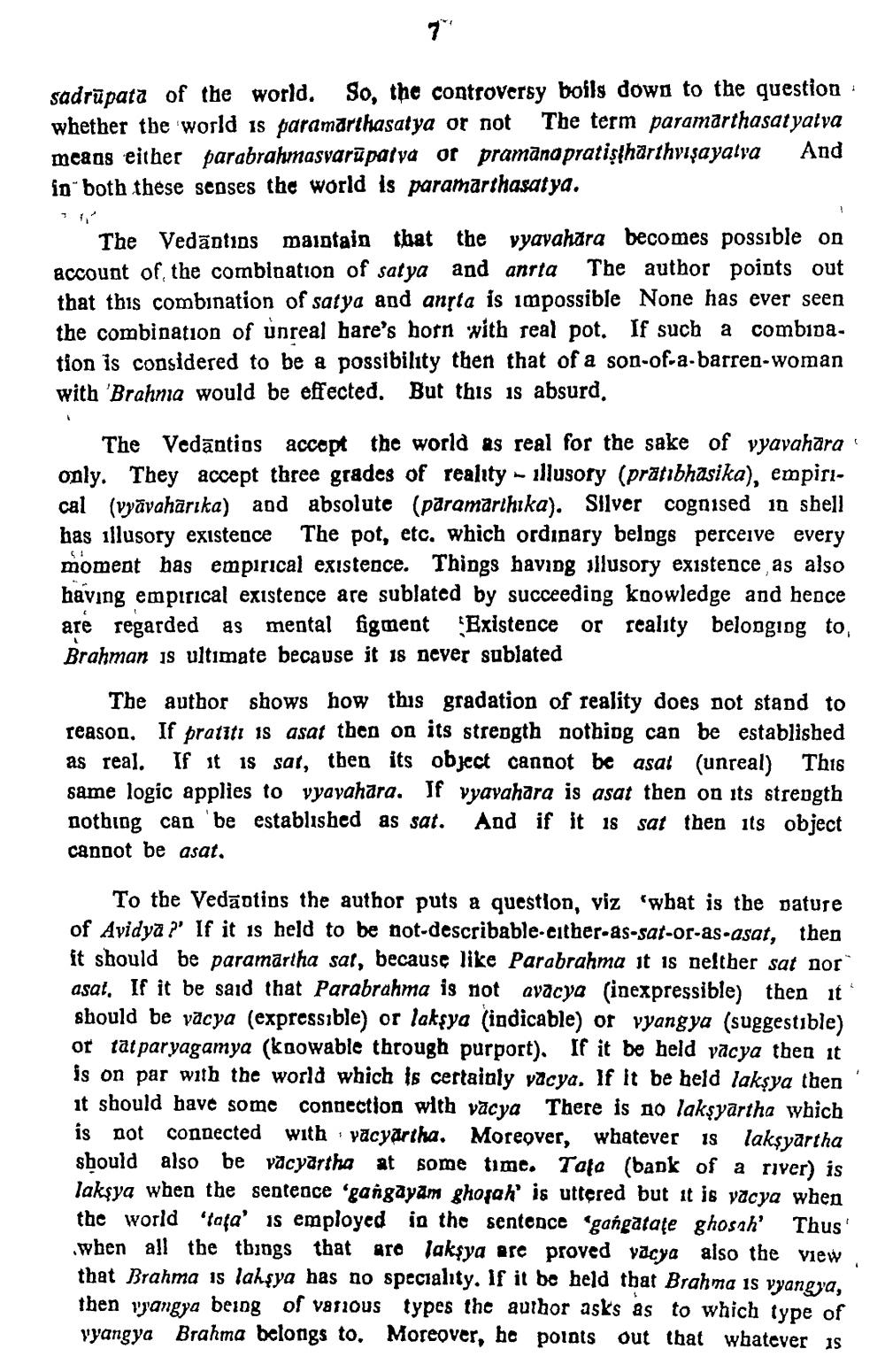________________
sadrüpata of the world. So, the controversy boils down to the question whether the world is paramarthasatya or not the term paramarthasat yatva meaas either parabrahmasvarūpaiya or pramānapratistharthvaşayalva And in both these seoses the world is paramarthasatya.
The Vedāntids maintain that the yyavahara becomes possible on account of the combination of satya and anria The author points out that this combination of satya and ansta is impossible None has ever seen the combination of unreal bare's horn with real pot. If such a combida. tion is considered to be a possibility then that of a son-of-a-barren-woman with 'Brahma would be effected. But this is absurd.
The Vedāntios accopt the world as real for the sake of vyavahara only. They accept three grades of reality - illusory (pratibhasika), empirical (vyāvahārıka) and absolute (paramarthika). Silver cognised 10 shell has illusory existence The pot, etc, which ordinary belogs perceive every moment has empirical existence. Things having illusory existence as also having empirical existence are sublated by succeeding knowledge and hence are regarded as mental figment Existence or reality belongiog to, Brahman is ultimate because it 18 never sublated
The author shows how this gradation of reality does not stand to reason. If pratiti is asat then on its strength nothing can be established as real. If it is sat, then its object cannot be asat (unreal) This same logic applies to vyayahara. If vyavahara is asat then on its strength nothiog can be established as sat. And if it 18 sat then its object cannot be asat,
To the Vedāntins the author puts a question, viz 'what is the nature of Avidya ?' If it is held to be not-describable-cither-as-sat-or-as-asat, then it should be paramartha sat, because like Parabrahma it is nelther sat nor asat. If it be said that Parabrahma is not avacya (inexpressible) then it' should be vacya (expressible) or lakşya (indicable) or vyangya (suggestible) or tatparyagamya (koowable through purport). If it be held vācya then it is on par with the world which is certainly vacya. If it be held lakşya then it should have some connection with vacya There is no lakşyartha which is not connected with vacyártha. Moreover, whatever 18 laksyartha should also be vacyartha at some time. Tata (bank of a river) is lakşya when the sentence 'gangayam ghoçak' is uttered but it is yocya when the world 'tafa' is employed in the sentence 'gangatațe ghosah' Thus' .when all the tbings that aro lakşya are proved vacya also the view that Brahma is lahşya has no speciality. If it be held that Brahma is vyangya, then vyangya being of various types the author asks as to which type of vyangya Brahma belongs to. Moreover, he polats out that whatever is




